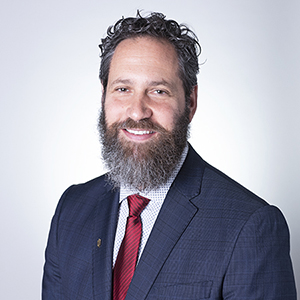Skin cancer is the most common cancer in the United States, according to the Centers for Disease Control and Prevention (CDC)—and one of the most at-risk groups for the disease are those between the ages of 15 and 20 years. With help from the National Institutes of Health (NIH), professor and chair of the Indiana University School of Public Health-Bloomington (SPH-B) Department of Applied Health Science Eric Walsh-Buhi, Ph.D. is researching how to intervene where this age group already exists: "on socials."
The NIH recently awarded Dr. Walsh-Buhi—who is also a member of the IU Simon Comprehensive Cancer Center—an R01 grant of $542,724 to fund the first year of a four-year project, “Skin cancer on social media: Analyzing current communications, modeling diffusion potential, and developing innovative prevention-focused messages.” The project will first characterize the social media landscape regarding skin cancer–related posts, then develop (with partners) and test scientifically accurate social media content about skin cancer prevention aimed at adolescent and young adult “digital natives.” The study will mainly focus on English language posts in North America on Twitter/X, Instagram, and Facebook. Dr. Walsh-Buhi will partner with Johan Bollen, Ph.D., chair of informatics at IU Luddy School; Lourdes Martinez, Ph.D. at San Diego State University; Basma Gomaa, Ph.D. at Nova Southeastern University – College of Pharmacy; and consultant and SPH-B adjunct professor Laura Lloyd.
“We are looking at how we can better understand the social media landscape around skin cancer–related posts, and how we can create messages for this priority population that resonates with them,” says Dr. Walsh-Buhi. “The last phase of the project will be using human-centered design principles to create new messages based on what we learn in the first couple of phases.”
Dr. Walsh-Buhi says his interest in skin cancer developed during his research with the surprising role that estheticians, or skin care professionals, play in the health of their clients, many of whom develop close, personal relationships with their providers. One of the topics they were most willing to talk about was skin cancer.
The project will follow the multilevel model of meme diffusion (M3D), which is a theory that explains how a message or a meme—in this context, any kind of reproduceable message—diffuses through networks and endures.

“We want to try to understand how skin cancer–related messages become popular, what are the elements that make them effective—meaning how it goes viral, not necessarily that it changes behavior,” says Dr. Walsh-Buhi. “Do they have a video in them, or are they boosted by some personality or influencer? The idea is if we can replicate the elements that make a message popular then we can create new and potentially effective skin cancer prevention messages for young people.”
The focus on the younger population is vital, as data shows that if a person gets five or more blistering sunburns before age 20, the likelihood of getting skin cancer increases three-fold, according to Dr. Walsh-Buhi. Misinformation surrounding skin cancer generated via social media is also a critical aspect of this study.

“If you go on social media and do some focused searches you will see a lot of misinformation—for example, on sunscreen itself,” says Dr. Walsh-Buhi. “I had an undergraduate student ask me about something they read on social media about sunscreen causing skin cancer and the bottom line is that’s simply not true.”
In the last phase of the project, people in the targeted age range (particularly tanning bed users from a variety of ethnic backgrounds and sexual orientations) will provide feedback on effective messaging.
“Everything is going to fail unless you involve the intended users,” says Dr. Walsh-Buhi. “We are going to also look at tanning bed salon services that do post social messages so we can understand competing memes. Tanning bed use is declining, but skin cancer rates are going up along with the cost of healthcare and treating skin cancer, and that speaks to the significance of what we are doing.”
For more stories about SPH-B making a big difference both locally and worldwide, visit go.iu.edu/48bx.


